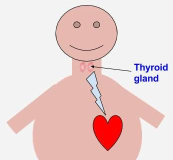Precautions during treadmill test
Treadmill exercise test is often taken as a fitness test during routine medical check up. But this is not a test meant for everyone coming for a health check up. A preliminary assessment of the fitness of an individual to undergo a treadmill test is desirable. This will include a short check on whether the person has any medical conditions which could increase the risk of the test. Moreover, it is difficult for persons with physical disabilities to undergo the test.
Anyone who has had a recent episode of chest pain, dizziness or breathlessness needs a full evaluation of the function of the heart prior to the test. If there is no such instance and one has a reasonable effort tolerance in the form of ability to climb two flights of stairs at stretch during routine activities, it is reasonable to undergo a treadmill test without full evaluation of heart function. Older persons seeking to start an exercise program for fitness needs to undergo treadmill test in the hospital prior to initiation of such programs as some of them may have silent heart disease.
An initial recording of the electrocardiogram (ECG) is done by the technician before the treadmill test. If an old ECG is available, the current one is compared with the old one for any fresh changes. If fresh changes are detected, the test is deferred and further testing sought. Initial blood pressure, heart rate, height and weight are recorded prior to the test. If there is an extreme of heart rate or blood pressure, again a medical evaluation is sought. Anyone with a current illness like fever is not taken up for treadmill test. Those with disabilities of lower limb naturally find it difficult to do a treadmill. Upper limb disability, though it may cause some discomfort in holding balance during treadmill, need not necessitate deferral of the test.
The person undergoing treadmill test is advised to report immediately if there is any chest discomfort, giddiness, breathlessness or any other new symptom. The technician and doctor in the treadmill room continuously monitors the heart rate and ECG changes during treadmill test to ensure safety. Any significant change in the ECG, heart rhythm or symptoms mandate immediate termination of the test and further observation. Treadmill room is equipped with all emergency care equipment and medications to treat in case of an event. Observation for a short period after the test is also routine, to detect any changes in the ECG during recovery period, which is not uncommon. Those developing persistent ECG changes or fresh symptoms may be advised hospital admission and further care.



